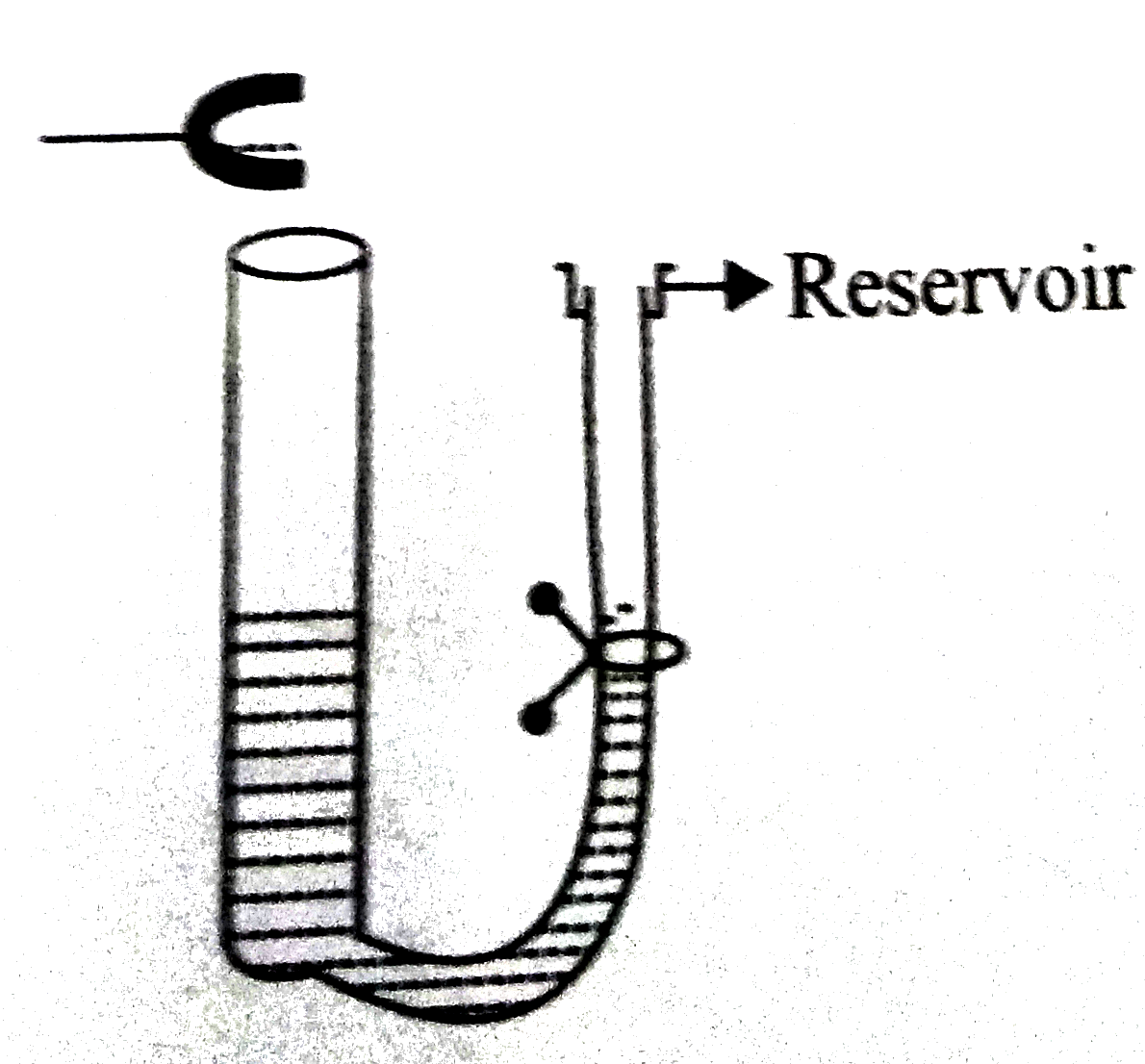A tuning fork of frequency 250 Hz is vibrating at one end of a tube as shown in the figure. If maximum sound is heard at the other end, then the velocity of the waves will be

336 m/s
672 m/s
168 m/s
285 m/s
The correct Answer is:D
Path difference =πr−2r
Path difference for maximum sound is λ,
λ=r[π−2]
=[3.14−2]×1
λ=1.14
v=nλ
=250×1.14=285.00
v=285m/s
Topper's Solved these Questions
Similar Questions
A tuning fork of frequency 440 Hz is to be mounted on a wooden box with one end open to reinforce its sound. What would be the length of the sounding box ? (Velocity of sound in air =332ms−1)
View SolutionA glass tube of 1.0m length is filled with water . The water can be drained out slowly at the bottom of the tube . A vibrating tuning fork of frequency 500Hz is brought at the upper end of the tube and the velocity of sound is 330m/s. Find the number of resonances that can be obtained.
View Solution
Knowledge Check
- Question 1 - Select One
A glass tube of length 1m is filled with water . The water can be drained out slowly at the bottom of the tube . If a vibrating tuning fork of frequency 250Hz is brought at the upper end of the tube and the velocity of sound is 330 m/s , then the total number of resonance obtained will be
A4B3C2D1 - Question 2 - Select One
A stretched string is in resonance with a tuning fork of frequency 250 Hz. If the distance between two consecutive antinodes on the string is 5, then the velocity of the progressive wave in the string is
A10m/sB15m/sC20m/sD25m/s - Question 3 - Select One
A tuning fork of frequency 340Hz is vibrated above a cylindrical hallow tube closed at one end . Poured in it. What is the maximum height of water required for resonance ?
A95cmB25cmC45cmD105cm
A tuning fork of frequency 440 Hz resonates with a tube closed at one end of length 1.8 cm and diameter 5 cm in fundamental mode. The velocity of sound in air is
View SolutionA tuning fork of frequency 90Hz is sounded and moved towards an observer with a speed equal to one - tenth the speed of sound. The note heard by the observer will have a frequency
View SolutionA tuning fork vibrating with a frequency of 500 Hz is kept close to the open end of a tube filled with water, as shown in figure. The water level in the tube is gradually lowered When the water level is 17 cm below the open the open end, maximum intensity of sound is heard. If the room temperature is 20∘ C, the speed of sound in air at the temperature is
 View Solution
View SolutionA tuning fork of frequency 1024 Hz is used to produce vibrations on a sonometer wire of natural frequency 256 Hz. Then the wire will vibrate in
View SolutionIf a tuning fork of frequency 512Hz is sounded with a vibrating string of frequency 505.5Hz the beats produced per sec will be
View Solution
